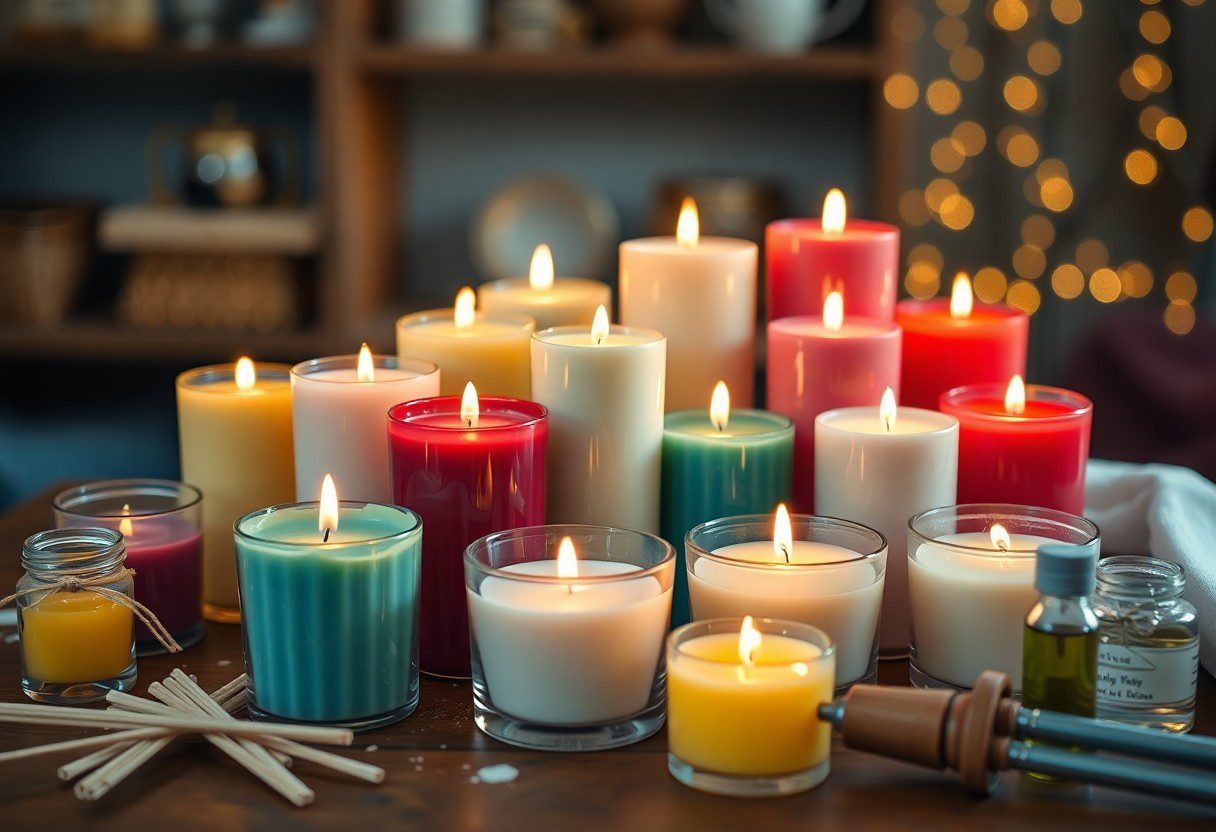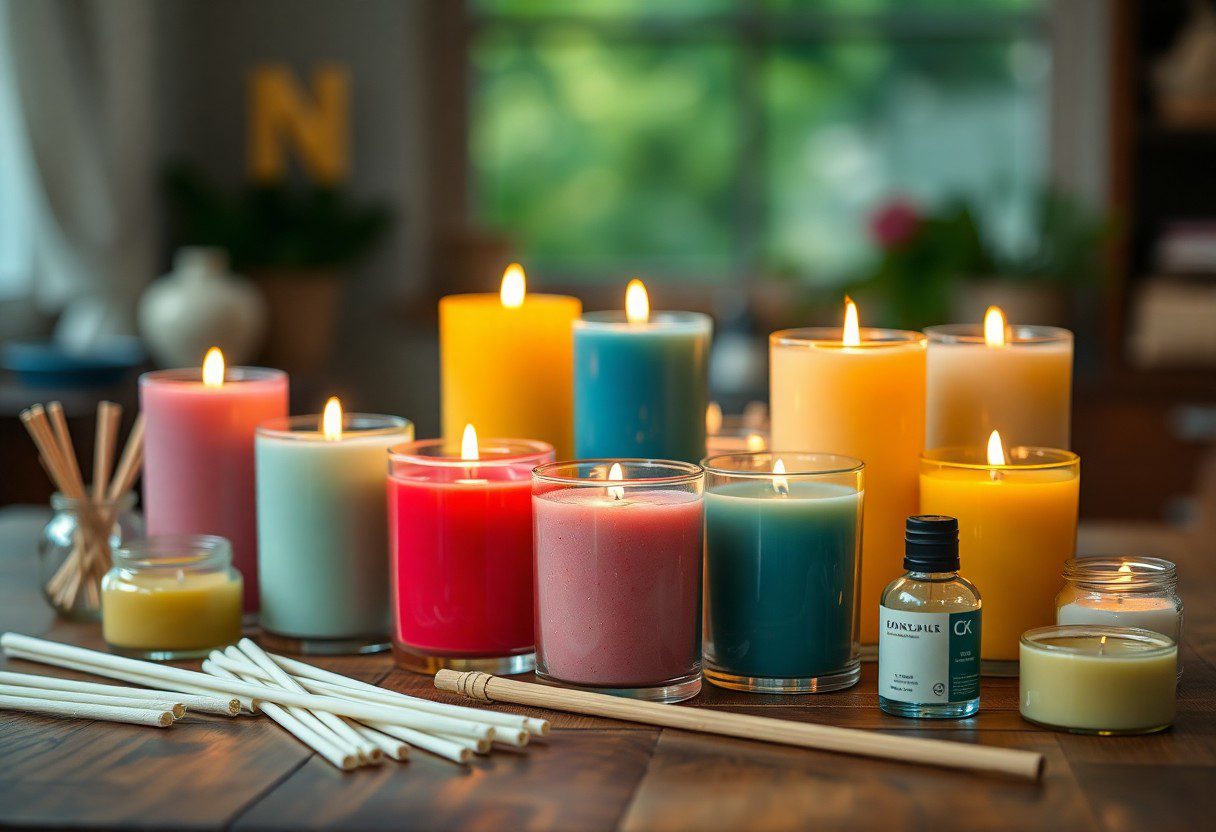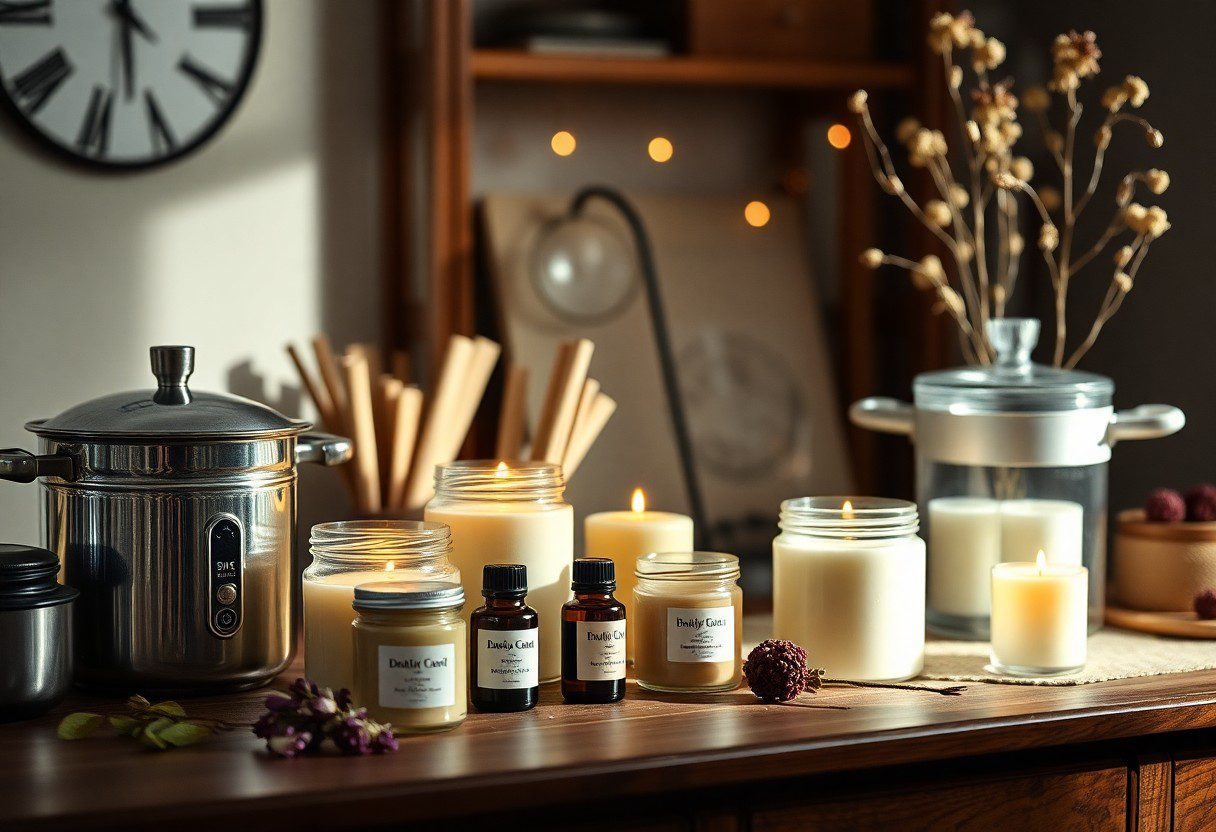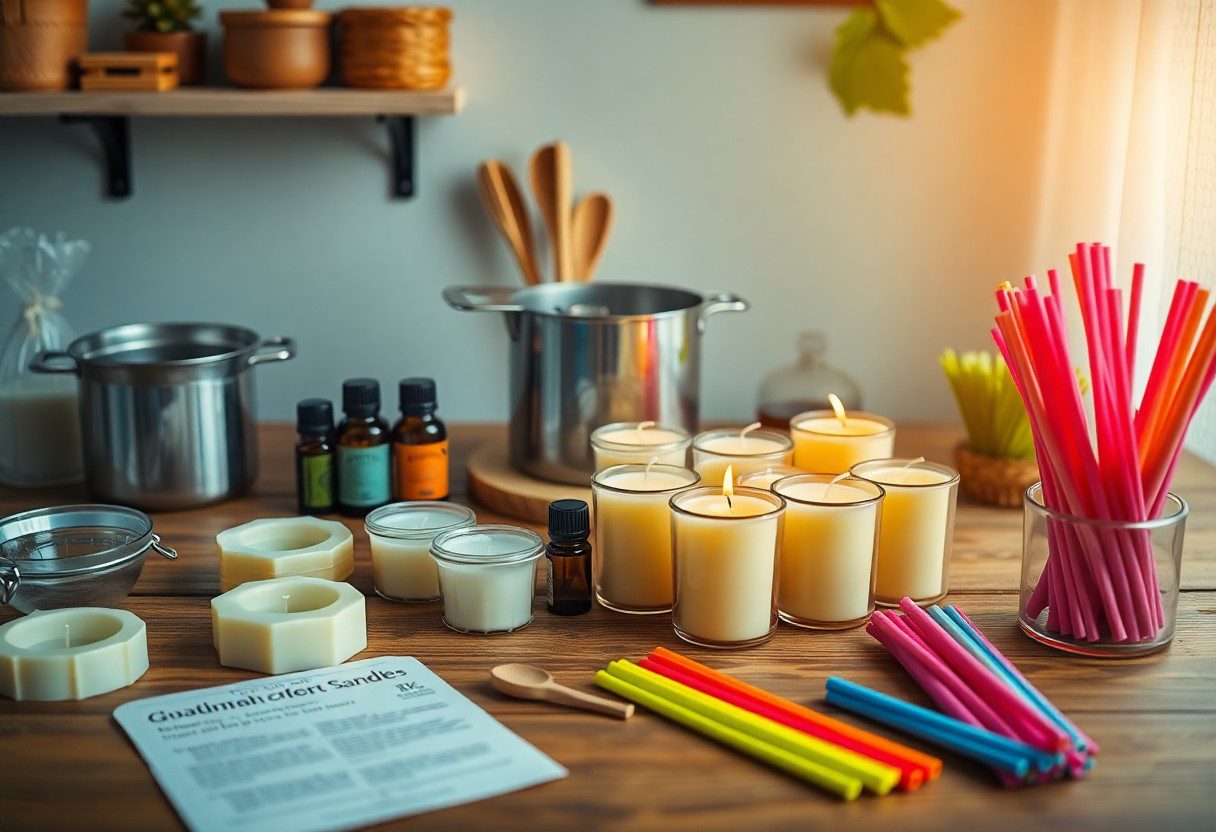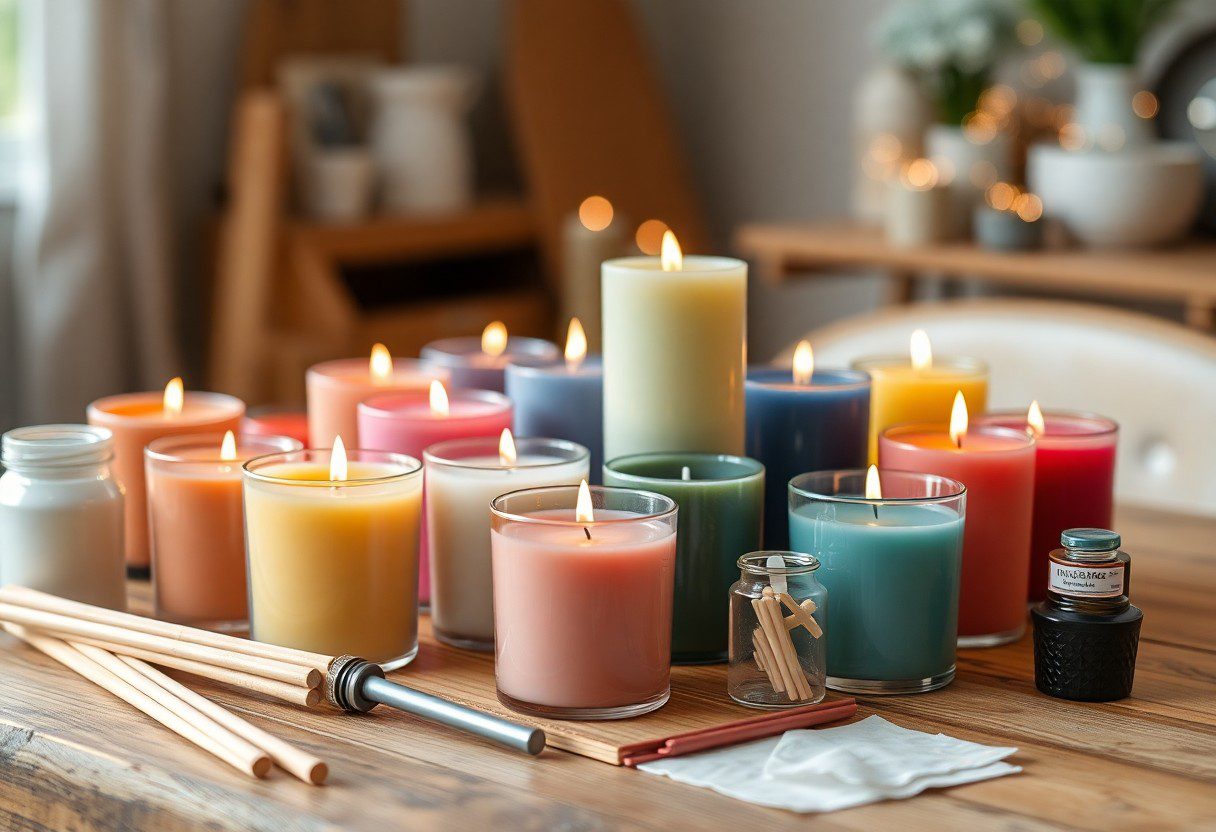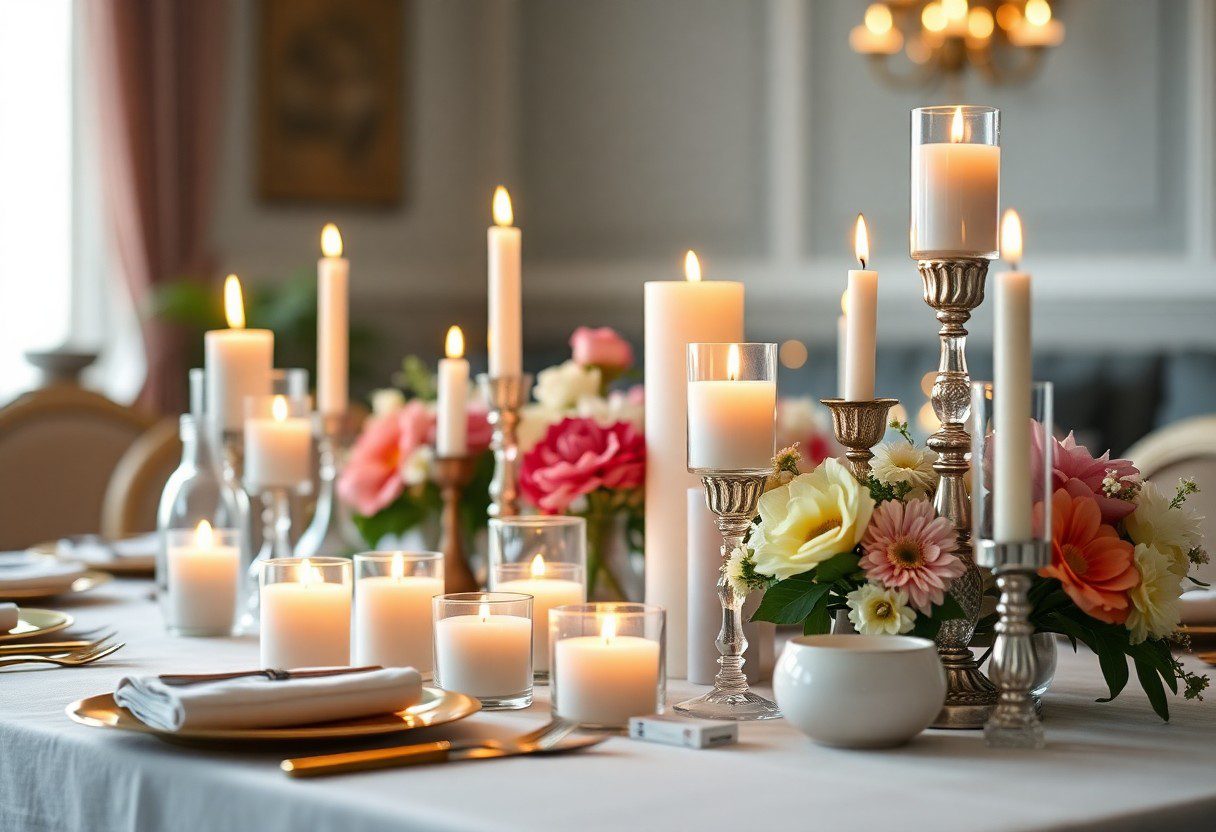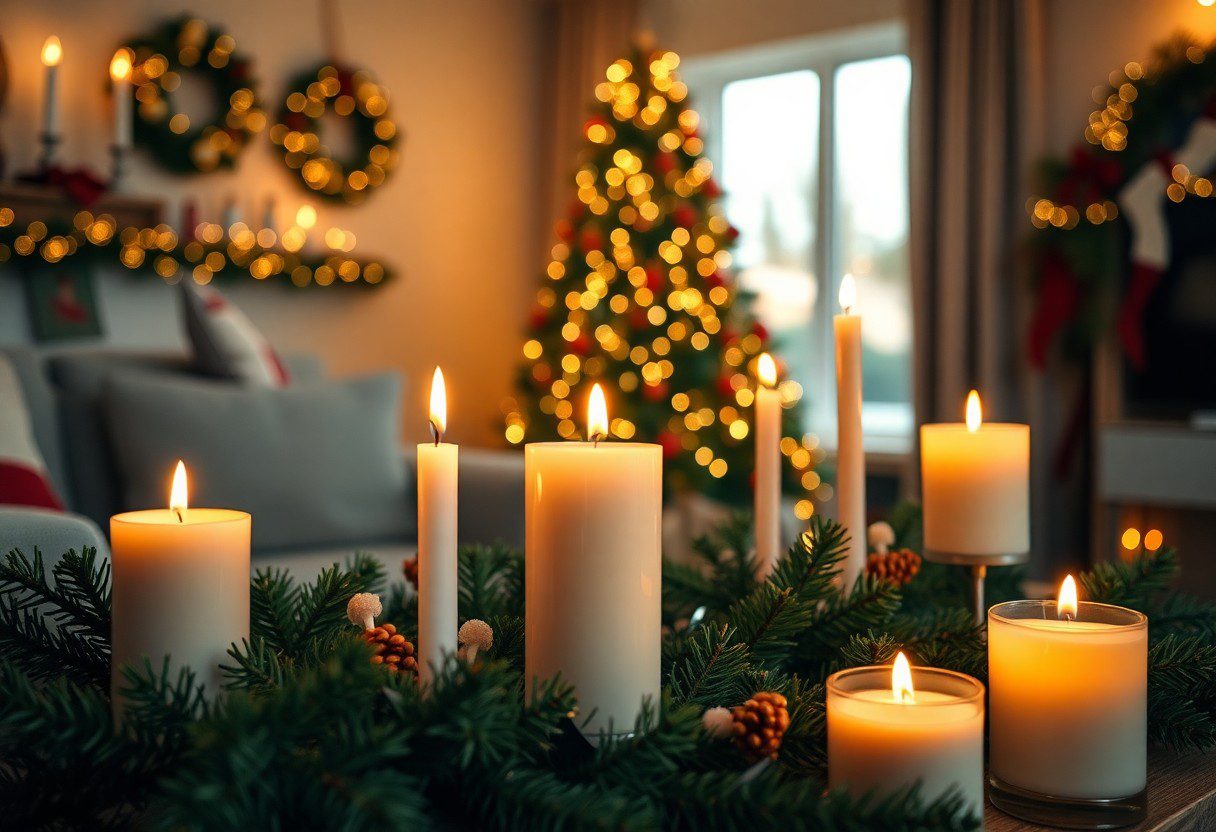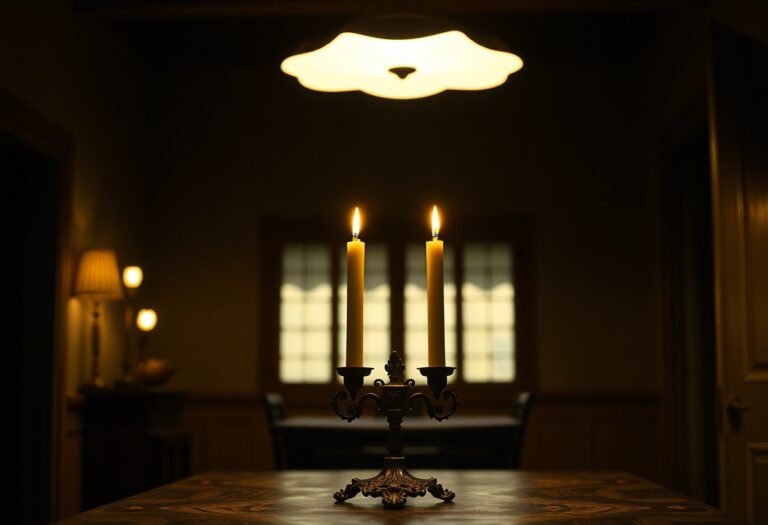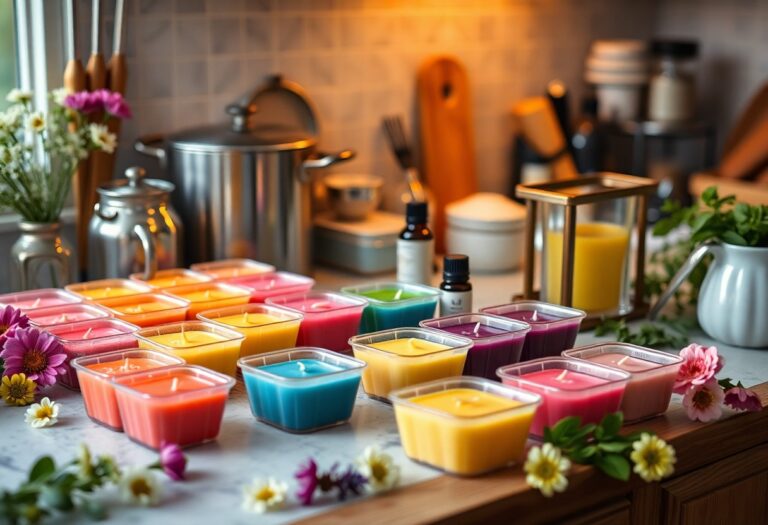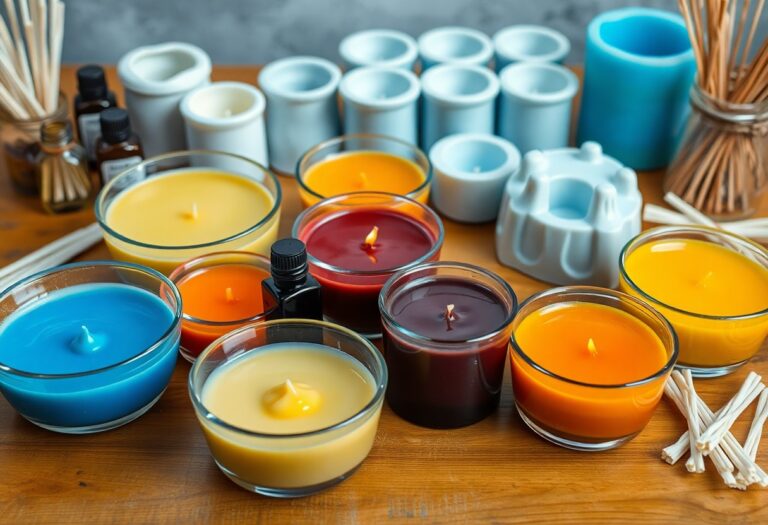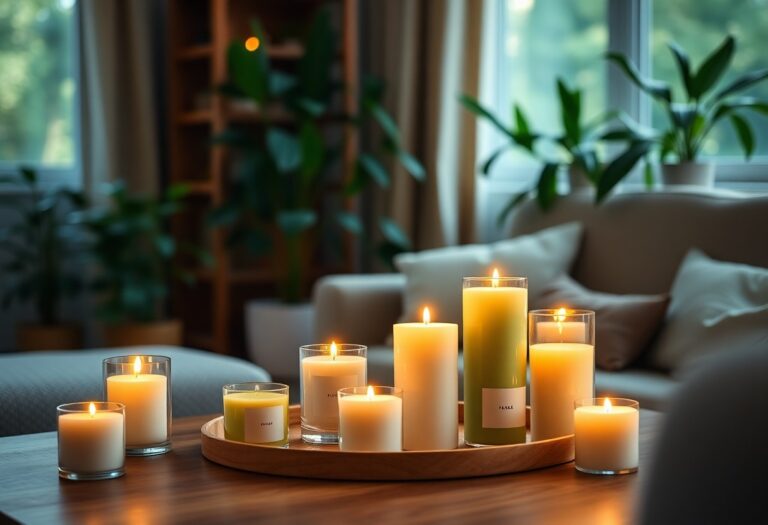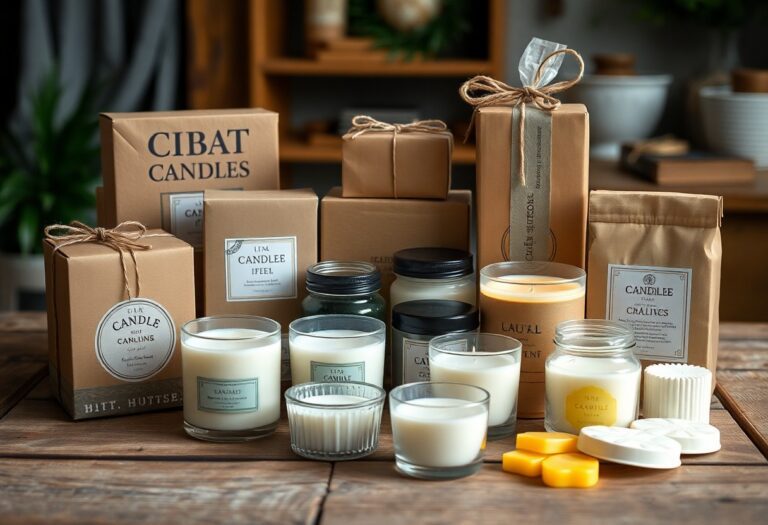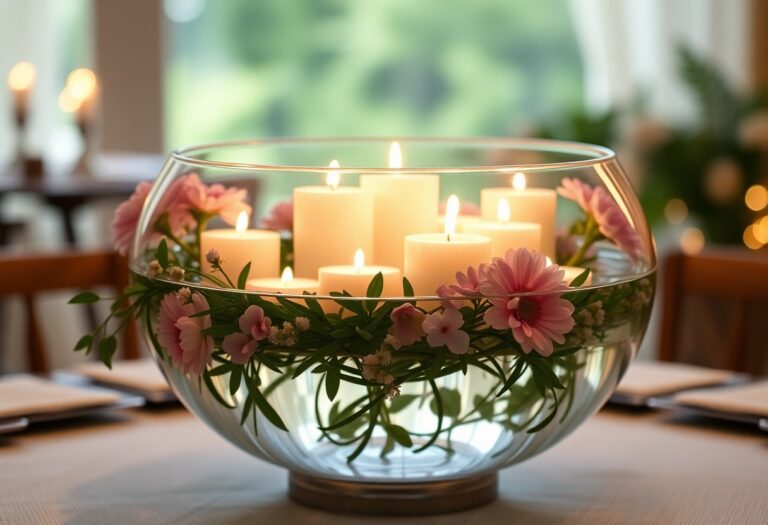Mastering DIY Votive Candles – Tips And Tricks For Perfect Small Candles
DIY votive candles can transform your home into a cozy, inviting space while allowing you to express your creativity. To ensure safe and successful candle-making, it’s imperative to understand the materials you’ll need, the proper techniques, and the importance of using high-quality wax and wicks. In this guide, you will discover valuable tips and tricks that will help you craft beautiful, long-lasting candles that elevate your decor and create a warm ambiance.
Understanding Votive Candles
To truly appreciate the art of crafting your own votive candles, it is vital to understand their unique characteristics and purpose. Votive candles are small, typically set in glass holders, designed to burn for several hours, providing a warm, inviting glow. Originally used in religious ceremonies, they have evolved into versatile home decor items that enhance any ambiance. Their compact size makes them ideal for creating intimate settings, whether for meditation, celebrations, or simply to beautify your space.
History of Votive Candles
Among the earliest uses of votive candles were in ancient religious rituals, symbolizing offerings to deities. Historically, these candles were typically burned in churches or temples, often placed near altars. Their significance has expanded over centuries, shifting from sacred practices to modern-day decorative pieces used for a variety of occasions. The transition reflects changes in cultural values, with votive candles now representing not only spirituality but also love, remembrance, and celebration.
Types of Votive Candles
Behind the diverse world of votive candles lie several types that cater to your individual preferences. Understanding the various types can help you choose the ideal candle for your needs:
| Scented Votive Candles | Infused with fragrances for aromatherapy. |
| Unscented Votive Candles | Perfect for minimalist decor, free from added scents. |
| Colored Votive Candles | Available in a spectrum of colors for visual appeal. |
| Decorative Votive Candles | Designed with intricate shapes or patterns. |
| Eco-Friendly Votive Candles | Made with natural waxes and sustainable materials. |
Assume that understanding these types empowers you to select those that bring your vision to life.
Consequently, the choice you make among votive candle types can significantly enhance your environment. Whether you desire the soothing aroma of scented candles or the elegance of colored ones, your selections play a pivotal role in your overall experience. Each type offers unique benefits:
| Fragrance Strength | Varies based on scented vs. unscented. |
| Time of Burn | Different wax compositions impact burn time. |
| Visual Appeal | Decorative options add charm to any setting. |
| Cost | Can significantly differ among types. |
| Environmental Impact | Eco-friendly options promote sustainability. |
Assume that choosing wisely aligns with both your aesthetic desires and values.
Essential Materials and Tools
Any successful DIY votive candle project begins with the right materials and tools. To create stunning candles, you’ll need wax, wicks, fragrance oils, and a heat source, as well as a double boiler, thermometer, pour pot, and molds. Having high-quality supplies will help you achieve the best results and ensure that your candles burn evenly and smell delightful. With the right setup, you can confidently begin on your candle-making journey.
Choosing the Right Wax
On your candle-making adventure, selecting the appropriate wax is key to crafting beautiful votive candles. Paraffin wax is popular due to its affordability and availability, whereas soy wax is an eco-friendly option that burns cleaner. Beeswax, another choice, boasts a natural honey scent and larger burn time. Each type has its unique properties, so consider your preferences and desired outcomes when making your selection.
Wicks and Fragrance Oils
Before submerging into candle-making, you must choose the right wicks and fragrance oils. Wicks come in various sizes to suit different candle diameters, and selecting the correct wick ensures an even burn and adequate scent throw. For fragrance oils, opt for high-quality, skin-safe oils designed specifically for candle-making to achieve a pleasing aroma.
Fragrance oils are crucial for enhancing your votive candles’ sensory experience. The right ratio of fragrance to wax can transform your candles into aromatic masterpieces, while too much can cause smoking or poor burns. Always check the scent load guidelines based on the wax type you’re using. Additionally, opt for non-toxic fragrance oils to ensure safety and preserve your home’s air quality when you light your candles. Pay attention to these details for a successful candle-making experience.
Step-by-Step Candle Making Process
Now, let’s break down the candle making process into simple steps that you can follow for perfect votive candles.
| Step | Description |
| 1. Preparing Your Workspace | Set up a safe and clean working area with all your materials. |
| 2. Melting the Wax | Heat your wax until it reaches the right temperature. |
| 3. Adding Fragrance and Color | Add your preferred scents and colors. |
| 4. Pouring the Wax | Carefully pour wax into molds or containers. |
| 5. Setting and Curing | Let your candles cool and solidify completely. |
Preparing Your Workspace
By ensuring your workspace is organized, you eliminate clutter and make the candle-making process more enjoyable. Gather all necessary materials such as wax, wicks, molds, colors, and fragrances, and keep them within reach. Ensure that your workspace is protected with newspapers or a covering, as spills can occur. It’s also advisable to wear an apron and gloves for safety.
Melting and Pouring the Wax
Workspace is key during the melting process. First, you will need to use a double boiler to heat your wax gently, ensuring it does not burn. Once the wax has melted to the appropriate temperature, you can add colors and fragrances. Always check the recommended temperatures for adding fragrances to maintain their scent. Pour the melted wax slowly into your molds, avoiding overfilling. It’s imperative to work carefully, as molten wax can be very hot and cause burns.
It’s important to monitor the temperature during this step. Melting wax above its flashpoint can present a fire risk, so ensure you’re using a thermometer. Keep an eye on the melting process, stirring occasionally to help the wax melt evenly. Once melted, have your molds ready to pour; pouring too quickly can create air bubbles and imperfections in your votive candles. Allow enough time for your candles to solidify completely, which enhances their quality and performance.
Tips for Adding Scent and Color
All your DIY votive candles can become delightful sensory experiences with the right techniques for adding scent and color. Consider the following tips:
- Select high-quality fragrance oils to ensure a long-lasting scent.
- Experiment with the right amount of dye to achieve your desired shade.
- Mix colors to create unique, custom hues.
- Use color-blocking techniques for layered effects.
Any efforts you make to combine scent and color will elevate your candles. For more guidance, check out these Top 10 Candle Making Tips for Beginners.
Balancing Fragrance and Dye
On your quest for the perfect candle, finding the right balance between fragrance and color is key. Aim for a harmonious blend that doesn’t overpower your senses. When mixing scents, opt for a brief testing phase with small samples to identify the ideal proportions.
Achieving Consistent Color Distribution
Color consistency can significantly impact the overall look of your votive candles. Ensure that your dye is thoroughly combined with the wax while it’s melted, allowing one even hue throughout. Test small batches before proceeding to larger pours.
In addition, to maintain consistent color distribution, consider using a dye specifically designed for candles, as they dissolve more uniformly. Always measure your dye carefully to prevent any inconsistency during the pouring process. Stir your wax thoroughly, but avoid quick movements to minimize air bubbles. By prioritizing these practices, you can elevate the visual appeal and overall quality of your candles.
Common Mistakes and How to Avoid Them
After submerging into the art of votive candles, you may encounter some common pitfalls that can derail your candle-making experience. To prevent errors such as improper wick sizing or uneven melting, consult this guide on How to Make Votive Candles. By understanding these frequent mistakes, you can refine your process and create beautiful, functional candles every time.
Troubleshooting Common Issues
After shaping your votive candles, you may notice imperfections such as cracks or uneven tops. One way to troubleshoot these issues is by ensuring a steady pouring temperature and avoiding drastic temperature changes during the cooling process. If your candles have an uneven surface, reheating and redistributing the wax can help achieve that perfect finish.
Tips for Refining Your Technique
Mistakes are often an inevitable part of candle making, but learning from them can significantly enhance your skills. Start by using a reliable thermometer to check your wax’s melting point carefully, as accurate temperatures lead to a smoother pour. Pay attention to the wick size that suits your votive’s diameter to prevent tunneling. Additionally, practice measuring your fragrance oils for consistent scent throw. Recognizing these elements helps you achieve greater control over the final output.
Another effective method for refining your votive candle technique is experimenting with different wax blends. Utilizing quality wax can enhance the burn time and scent diffusion. Consider testing various wick materials, like cotton or wood, to see which works best for you. By keeping notes on your experiments, you can build a recipe that produces candles you love. Recognizing your unique preferences will help elevate your DIY candle-making adventure.
Creative Ideas for Customizing Votive Candles
For those looking to add a personal touch to your votive candles, customization is key. You can experiment with different scents, colors, and added embellishments to create candles that reflect your unique style and enhance any space. Consider incorporating seasonal themes or special occasions into your designs, letting your creativity shine as you craft beautiful and functional décor.
Decorative Additions
Above all, decorative additions can elevate your votive candles from simple to stunning. Think of natural elements like dried flowers, herbs, or even glitter that can be mixed into your wax as it cools. You can also use decorative containers—glass jars, ceramic holders, or reclaimed materials—to give your candles a distinctive look that complements your home decor.
Themed Candle Collections
At the heart of customized votive candles is the idea of themed candle collections. By creating sets that convey a particular mood or story, you can easily enhance your space and offer a curated experience for your guests. These collections can be based on holidays, seasons, or even personal experiences.
Collections can transform your candle-making journey into an exciting creative project. You might choose to focus on seasonal themes, such as autumn scents with cinnamon and pumpkin, or holiday collections featuring pine and cranberry. Alternatively, a spa collection could include relaxing lavender and eucalyptus candles, designed to provide a soothing ambiance in your home. Think outside the box by combining scents that evoke memories or feelings, ensuring every collection resonates with your personal touch.
To wrap up
Taking this into account, mastering DIY votive candles empowers you to create personalized ambiance for any occasion. By applying the tips and tricks outlined, you can enhance your craftsmanship and achieve perfectly shaped and scented candles. Pay attention to your materials, temperatures, and techniques, as these factors significantly influence the outcome. With practice and creativity, you’ll develop your signature style, bringing warmth and light into your space. Enjoy the process, experiment with various scents and designs, and watch as your skills grow with each creation.
Q: What types of wax are best for making DIY votive candles?
A: The most commonly used waxes for making votive candles are paraffin wax, soy wax, and beeswax. Paraffin wax is popular for its affordability and ability to hold fragrance and color well. Soy wax is a natural alternative that burns cleaner and is biodegradable, making it a favorite among eco-conscious candle makers. Beeswax, on the other hand, has a natural honey scent and burns longer than most other wax types, but it tends to be more expensive. Each wax has its unique properties, so choose based on your specific needs regarding fragrance, burn time, and environmental concerns.
Q: How can I ensure my votive candles burn evenly and don’t tunnel?
A: To achieve an even burn and prevent tunneling in your votive candles, start by using the right wick size for the diameter of your candle. A wick that is too small may not throw enough heat to melt the wax evenly, while an oversized wick could cause excessive soot and a messy burn. Additionally, allow the candle to burn for at least 1 hour for every inch in diameter on the first burn to create a proper melt pool. This helps to ensure that the wax around the wick melts completely, preventing tunneling. Lastly, consider using a wick that is made from natural fibers or wood, as these can enhance the overall burn quality.
Q: How can I customize the scent and color of my votive candles?
A: Customizing the scent and color of your votive candles is a fun and creative process. For scent, you can use candle fragrance oils specifically designed for candle making, as they provide a long-lasting scent throw. Add the fragrance oil to your melted wax when it reaches the recommended temperature for the best results. As for color, you can incorporate candle dye chips, liquid dyes, or natural colorants like herbs and spices. Mix in the colorants into your melted wax until you reach the desired hue, but be cautious not to add too much, as it can affect the candle’s burning properties. Experimenting with different combinations allows you to create unique and personalized votive candles!

